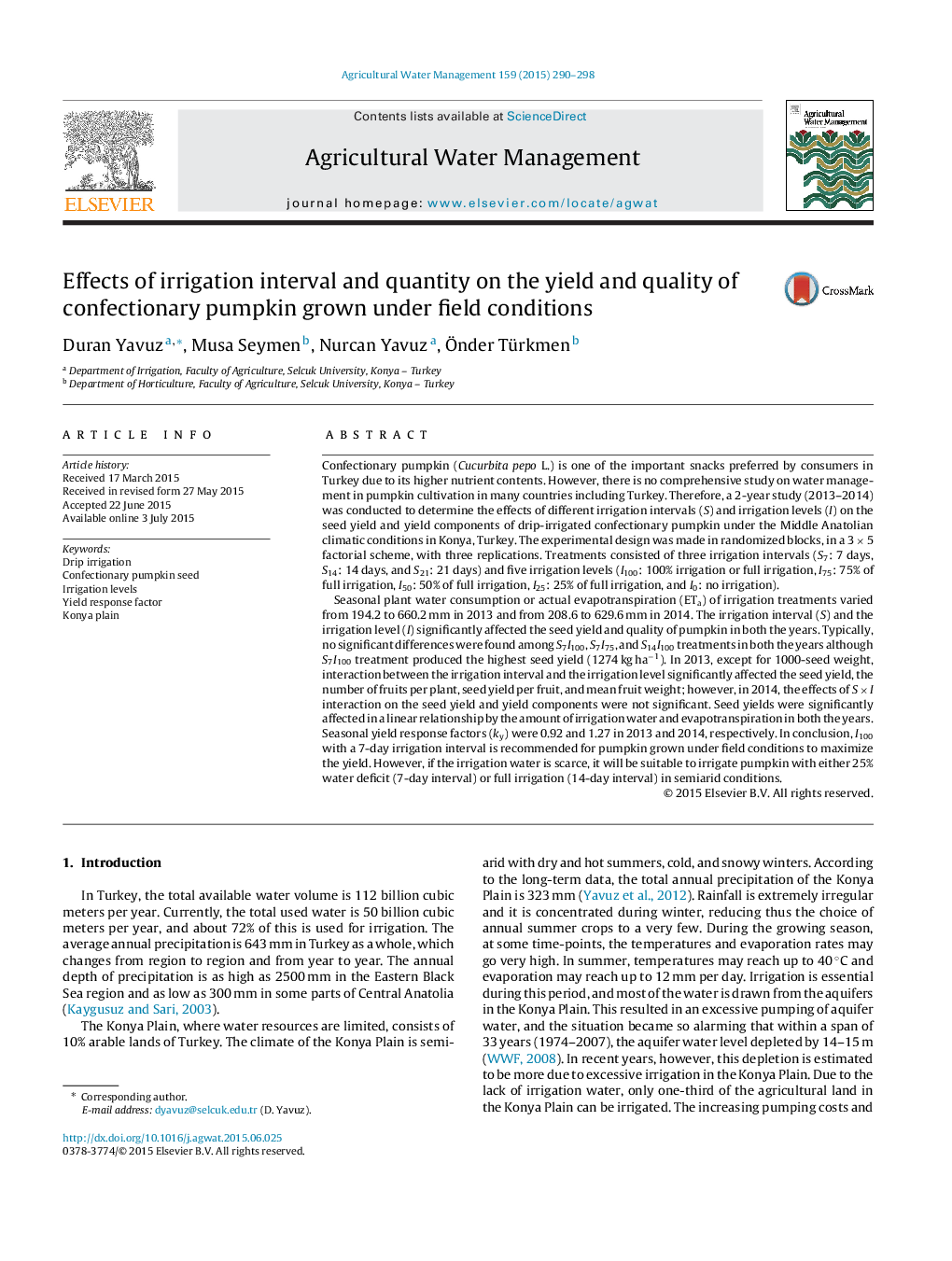| Article ID | Journal | Published Year | Pages | File Type |
|---|---|---|---|---|
| 6363744 | Agricultural Water Management | 2015 | 9 Pages |
Abstract
Seasonal plant water consumption or actual evapotranspiration (ETa) of irrigation treatments varied from 194.2 to 660.2 mm in 2013 and from 208.6 to 629.6 mm in 2014. The irrigation interval (S) and the irrigation level (I) significantly affected the seed yield and quality of pumpkin in both the years. Typically, no significant differences were found among S7I100, S7I75, and S14I100 treatments in both the years although S7I100 treatment produced the highest seed yield (1274 kg haâ1). In 2013, except for 1000-seed weight, interaction between the irrigation interval and the irrigation level significantly affected the seed yield, the number of fruits per plant, seed yield per fruit, and mean fruit weight; however, in 2014, the effects of S Ã I interaction on the seed yield and yield components were not significant. Seed yields were significantly affected in a linear relationship by the amount of irrigation water and evapotranspiration in both the years. Seasonal yield response factors (ky) were 0.92 and 1.27 in 2013 and 2014, respectively. In conclusion, I100 with a 7-day irrigation interval is recommended for pumpkin grown under field conditions to maximize the yield. However, if the irrigation water is scarce, it will be suitable to irrigate pumpkin with either 25% water deficit (7-day interval) or full irrigation (14-day interval) in semiarid conditions.
Related Topics
Life Sciences
Agricultural and Biological Sciences
Agronomy and Crop Science
Authors
Duran Yavuz, Musa Seymen, Nurcan Yavuz, Ãnder Türkmen,
